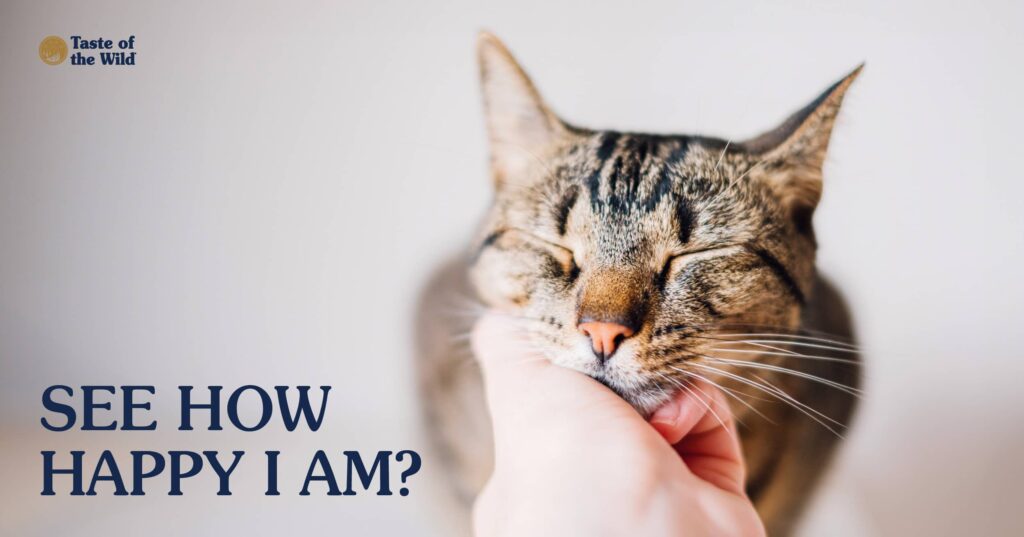
Many people assume that cats’ faces aren’t the most expressive when it comes to communication, particularly compared to dogs. You can certainly tell when a kitty is mad or needy or content, but generally you might think they are fairly stoic in their facial expressions. Well, research shows us that this is not the case — cats can actually produce 276 different facial signals!
There Are Over 200 Facial Expressions in Domestic Cats!
In a study that looked at facial signals in cats, researchers observed the behavior of 53 cats at the CatCaféLounge in Los Angeles. During the study, a special tool designed for cats called facial action coding systems (FACS) was used to analyze the facial expression of each cat during interactions with other cats.
They found that cats can produce 276 different facial signals when they interact socially with their cat counterparts. They also identified eight facial muscle movements that were produced differently in friendly or not-so-friendly interactions with other cats. They concluded that a cat’s facial signals correspond to different social functions, a tactic which is likely influenced by domestication. Those cat faces are not so stoic after all!
Cat Expressions Use More Than Faces
While cats may have over 200 different facial signals, these expressions are subtle, and you’re more likely to determine how cats feel by watching their whole body language — their ear position, body position and tail movements. For example, a happy cat will have their tail up with a little curve at the end and their ears will be relaxed, up and forward. Their whiskers are relaxed and you may even notice a slow blink if you watch their eyes closely. A grumpy cat will flatten their ears, show their teeth, puff up their hair on a stiff body and whip their tail back and forth. It’s definitely time to give them some space if you notice these signs. If cats feel anxious or stressed, they will have dilated pupils with their ears flattened and head lowered. Their body will cower and their tail will be low.
Behavior Can Help Decipher How Your Cat Is Feeling
Behavioral changes can be a good clue into how your cat feels. For example, if they’re feeling stressed or anxious, they may have accidents, refuse to eat and become more reclusive. Behavioral changes can also indicate that your cat is in pain.
Cats are skilled at hiding their pain; it’s a natural instinct that was essential for the survival of their wild ancestors who wanted to avoid appearing vulnerable to predators. Signs of pain in domestic cats are often vague — you might find your cat hiding from you or not wanting to interact with you as much as usual. They may groom less because stretching is uncomfortable, or they may groom more leading to bare patches of skin. They may lose their appetite, seem more finicky or have accidents because it’s too painful to use the litter box.
Do Cats Have Feelings or Emotions?
According to an article in Psychology Today, it is believed that cats show six basic emotions — anger, happiness, fear, surprise, disgust and sadness — the same emotions that dogs are believed to express. What is less certain is whether cats (or dogs) can show more complex emotions like jealousy, guilt, shame, disappointment, compassion and pride.
However, the article details a survey of over 1,000 dog and/or cat owners mostly from Belgium and the Netherlands who were asked to record cat emotions (or dog emotions). Most people reported observing the six basic emotions in cats and dogs. The more complex emotions were observed less often than the basic emotions, and more frequently in dogs than cats. Anger and disgust were more frequently attributed to cats than dogs, and joy and surprise were more commonly associated with young cats than older cats.
Can Cats Understand Human Emotions?
Research has shown that social cats like to be around people and that cats prefer to interact with humans rather than food or toys. You can tell how socially “smart” your cat is and if they can read your basic emotions by doing this simple test.
Sit in a room with your cat and bring in an object that might be unsettling to them, like a robot vacuum cleaner or fan that makes noise. After a while, move to the object and “pet” it, saying what a nice fan or vacuum cleaner it is in a calm, happy voice. If your cat is initially scared of the object but eventually calms and even approaches it, your cat can probably tune into your emotional cues and adjust its behavior accordingly.
Facial expression is just one way cats communicate how they are feeling to pet owners, each other and other animals. Cats use their whole body to communicate, so watching for those more obvious signs can help tell you what’s going on in that brain at any given time much more easily than your cat’s face.


